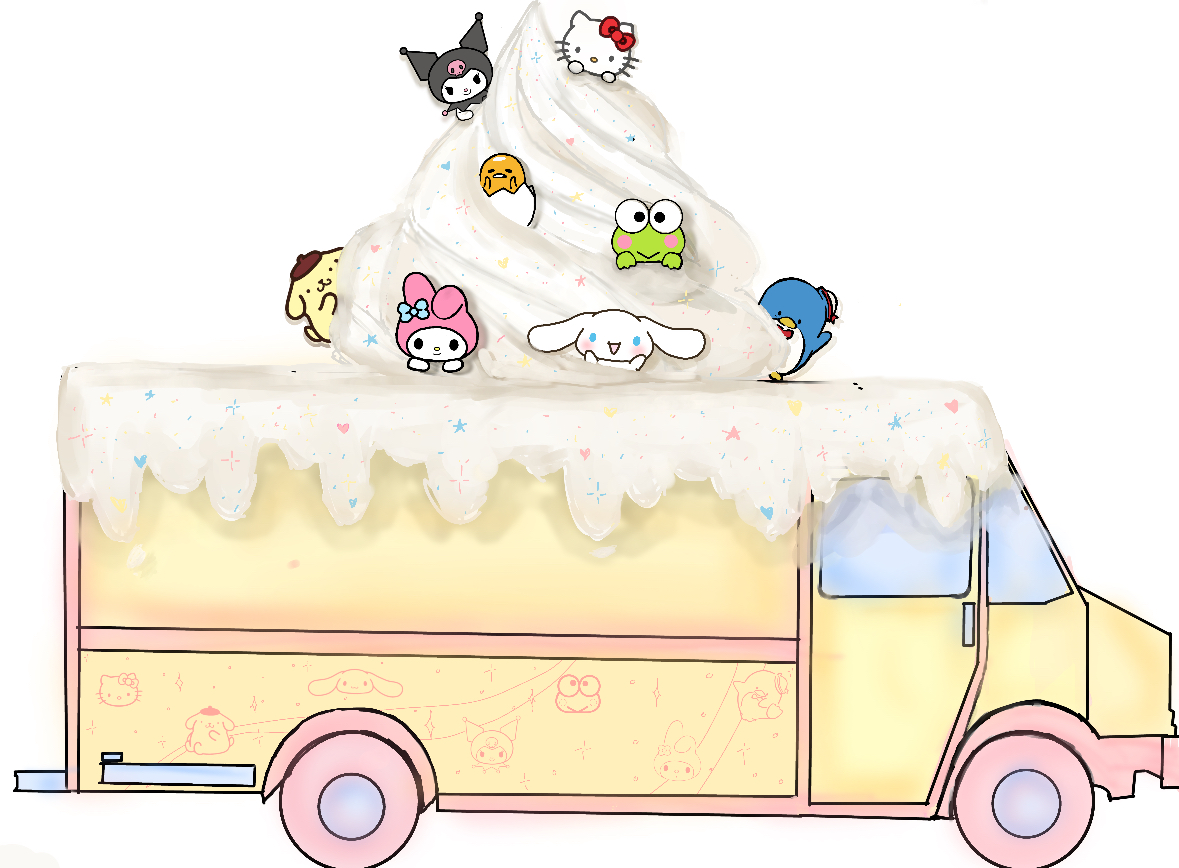After almost a month of planning, Yorba Linda High School’s Intro to Business class, directed by Ms. Romero, hosted a mock food truck experience on May 17, 2024. Students and teachers from all around YLHS gathered around the quad to look at all the student’s hard work and dedication to the project. Prior to the event, tickets were given out to every student and staff to vote for whichever food truck designs they enjoyed the most. All around, there were colorful tri-folds demonstrating the aspects of the food truck and freebees to those who stopped by the stands. Come along the journey of all of the things Intro to Business students did at YLHS to fully accomplish a successful food truck war.
Eleni Patel (9) shares, “The whole food truck wars experience like no other. I had so much fun working with my group mates on all the creative aspects of the project and I feel like we’ve all gotten so much closer during these times. All of us put in an equal amount of effort and simply just contributed the best we could. Honestly, despite all of the workload, I would love to do this project again if given the opportunity.”
Day 1:
On the first day of the project, Intro to Business students got into groups of 3-4 and decided on the roles of being the Chief Sales Officer (CSO), Chief Marketing Officer (CMO), Chief Operations Officer (COO), or Chief Financial Officer (CFO). All roles had their important duties that would contribute to the group in the future. After choosing the groups, students individually created a vision board and color scheme idea for their business.
Day 2:
The following day, the students got together with their groups and pitched their ideas for the vision board and color scheme to the group members. After, they would collectively vote whose idea is the best or mix multiple themes.
Day 3:
For the third day, the group was given one packet that was to be used as a planning guide to build the foundational blocks of the food truck business. On the first day of working on the packet, the students completed questions based on the market analysis, possible food truck names, the theme of their business, market challenges alongside their solution for it, the target market, and jotting down ideas for the different marker segmentations.
Day 4:
If students completed the first few pages of the planning guide of their business, they would move on to creating a mission statement and slogan. Besides that, they would spend time crafting together a nice logo that suits the theme of their business.
Day 5-7:
For the next few days, the product offerings of the food truck with their realistic prices were decided based on comparing the pricing of similar vendors. Using Canva, a visually appealing menu was created that includes all the item descriptions, photos of them, and prices.
Day 8:
On the eighth day, fake social media marketing food truck profiles were designed and created. Using the templates provided for Facebook, Instagram, and TikTok profiles, students advertised their products as if they were on real social media accounts.
Day 9-12:
The ninth day was used to “clean up” the social media marketing profiles for the Food Truck and begin the website development. Over the course of a few days, students continued to design their websites and added factors such as locations around the world/country, photos of their food, mobile ordering site, and company descriptions.
Day 13:
For the thirteenth day, a sales promotion plan and loyalty program were created for the food truck. It described offerings to bring new customers in and keep older customers. Additionally, a 3-paragraph Press Release announcing the grand opening of the food truck business was started.
Day 14:
The groups who finished writing the Press Release began developing the Production Plan. It included the staffing that they hoped to get along with the raw materials, equipment, and packaging needed to start and run the business.
Day 15:
When students gradually finished creating their Production Plan, they started working on the Operations Plan, which holds the point of sale (which types of money are accepted, licenses and certifications needed, potential controllable and uncontrollable risks, and insurance needed. At the same time, the fifteenth day acted as a “Clean-up” day for the company’s Press Release and Production Plan.
Day 16:
Feedback was given on the group’s Sales Promotion/Customer Loyalty Plan, Press Release, Production Plan, and Operations Plan by Ms. Romero, and the Intro to Business students used the class time to fix their documents.
Day 17 – 19:
Over the next few days, the groups worked on the Financial Plan. It gave an overview of the food truck’s budget and forecasted income using the business assets, determining needed capital, describing start-up expenses, describing operating expenses, describing financial record management, forecasting future finances, and describing their growth financing.
Day 20:
Using the documents that the students have filled out on the previous days, they then put together an official business plan which includes the executive summary, overview, market analysis, marketing and sales, operations, and financials.
Day 21 – 24:
For the final days of the Food Truck Wars project the groups assembled the printed business plan into a binder and began designing their final food truck design. Additionally, they started working on creating their Food Truck Tri-Fold Presentation Board. All of the items and documents that the groups have worked on during the past month were showcased to their full potential at the quad on Friday, May 17.




























